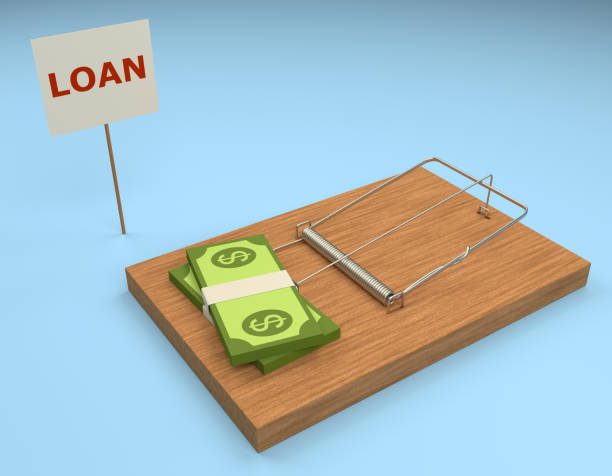Facing the burden of high-interest short-term loans can feel like being caught in a financial whirlwind. Whether it’s a payday loan, a cash advance, or a title loan, the allure of quick cash often comes with a hefty price tag in the form of sky-high interest rates. However, with careful planning, discipline, and determination, it’s possible to escape the cycle of debt and regain control of your financial future. In this guide, we’ll explore effective strategies for repaying high-interest short-term loans and achieving financial freedom.
Assess Your Financial Situation
Before diving into repayment strategies, it’s crucial to take a step back and assess your overall financial situation. Gather information about your income, expenses, debts, and assets to get a clear picture of your financial health. Determine how much you owe on your high-interest short-term loans, including the principal amount and the total interest accrued. Understanding the full extent of your debt will help you develop a realistic repayment plan tailored to your unique circumstances.
Prioritize Your Debts
Once you’ve assessed your financial situation, prioritize your debts based on interest rates, repayment terms, and consequences of non-payment. High-interest short-term loans should typically take precedence over other debts due to their exorbitant interest rates and potential for financial harm. Make a list of your debts, ranking them from highest to lowest interest rate, and focus your repayment efforts on tackling the highest-interest loans first while making minimum payments on other debts.
Create a Budget
A budget is a powerful tool for managing your finances and allocating your income effectively. Create a monthly budget that outlines your income, expenses, and debt repayment goals. Identify areas where you can cut back on discretionary spending and redirect those funds toward paying off your high-interest short-term loans. Be realistic about your expenses and prioritize essentials such as housing, utilities, groceries, and transportation while trimming non-essential expenses like dining out, entertainment, and luxury items.
Increase Your Income
Finding ways to increase your income can accelerate your debt repayment efforts and provide additional financial breathing room. Consider taking on extra work or side gigs to supplement your primary income, such as freelancing, consulting, tutoring, or delivering food. Explore opportunities for career advancement, additional training, or education that may lead to higher-paying job opportunities in the future. Every extra dollar you earn can be put toward paying off your high-interest loans and achieving financial freedom sooner.
Negotiate with Lenders
Don’t be afraid to reach out to your lenders to negotiate more favorable terms or repayment arrangements. Many lenders are willing to work with borrowers facing financial hardship to find mutually beneficial solutions. Ask about options for reducing interest rates, extending repayment terms, or setting up a structured repayment plan that fits your budget. Be honest and transparent about your financial situation, and provide documentation if necessary to support your request for assistance.
Consider Debt Consolidation
If you have multiple high-interest short-term loans, consolidating your debts into a single loan with a lower interest rate can simplify repayment and save you money on interest charges. Explore options for debt consolidation loans, balance transfer credit cards, or personal loans with more favorable terms than your existing loans. Be sure to compare interest rates, fees, and repayment terms carefully to ensure that debt consolidation will be beneficial in the long run.
Snowball or Avalanche Method
Two popular debt repayment strategies are the snowball method and the avalanche method. With the snowball method, you focus on paying off your smallest debts first while making minimum payments on larger debts. Once the smallest debt is paid off, you roll the payment amount into the next smallest debt, gradually snowballing your payments until all debts are paid off. This approach provides quick wins and can boost motivation as you see progress.
Alternatively, the avalanche method involves prioritizing your debts based on interest rates, paying off the debt with the highest interest rate first while making minimum payments on other debts. Once the highest-interest debt is paid off, you move on to the debt with the next highest interest rate, continuing the process until all debts are paid off. While the avalanche method may save you more money on interest in the long run, it may take longer to see tangible progress compared to the snowball method.
Seek Financial Counseling
If you’re struggling to manage your debt or develop a repayment plan on your own, consider seeking assistance from a certified credit counselor or financial advisor. A professional can help you assess your financial situation, explore options for debt relief, and develop a personalized debt management plan tailored to your needs and goals. They can also provide valuable guidance on budgeting, money management, and building healthy financial habits for the future.
Stay Motivated and Persistent
Paying off high-interest short-term loans can be a challenging and daunting task, but it’s essential to stay motivated and persistent in your efforts. Celebrate small victories along the way, whether it’s paying off a portion of your debt, reaching a milestone in your repayment plan, or resisting the temptation to take on more debt. Stay focused on your long-term financial goals and remind yourself of the freedom and peace of mind that comes with being debt-free.
Conclusion
Repaying high-interest short-term loans requires discipline, determination, and strategic planning, but it’s achievable with the right mindset and approach. By assessing your financial situation, prioritizing your debts, creating a budget, increasing your income, negotiating with lenders, considering debt consolidation, and employing effective debt repayment strategies, you can take control of your finances and pave the way toward a brighter financial future. Remember that every step you take toward debt freedom brings you one step closer to achieving your goals and enjoying the peace of mind that comes with financial stability.


